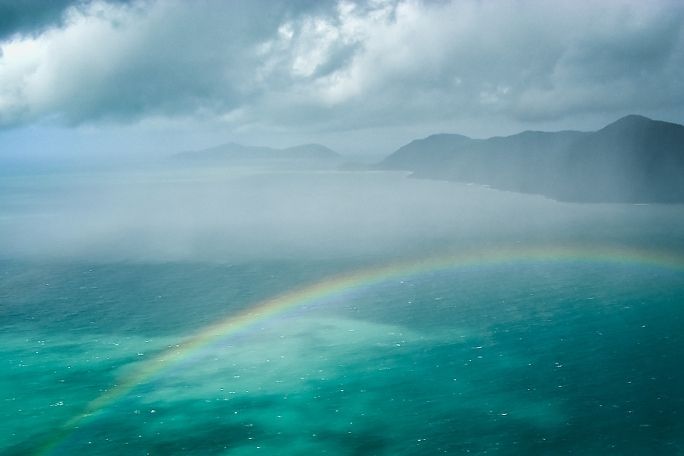Lesson summary
This lesson incorporates clips from Blue The Film as learning inspiration. In this lesson, students investigate the interactions involving the biosphere, lithosphere, hydrosphere and atmosphere. Students begin by refreshing their understanding of key terms and by using the carbon cycle as an example of global system interactions. Students then use information on marine ecosystems to create a diagram showing the interactions between the four global systems.
Learning intentions:
Students will...
- identify and describe interactions involving the biosphere, lithosphere, hydrosphere and atmosphere.
Success criteria:
Students can...
- know what the hydrosphere, lithosphere, atmosphere and biosphere are and how they are interconnected
- know the effects of human activity on the ocean.
Lesson guides and printables
Lesson details
Curriculum mapping
Australian curriculum content descriptions:
Year 10 Science:
- Global systems, including the carbon cycle, rely on interactions involving the biosphere, lithosphere, hydrosphere and atmosphere (ACSSU189).
- People use scientific knowledge to evaluate whether they accept claims, explanations or predictions, and advances in science can affect people’s lives, including generating new career opportunities (ACSHE194).
- Critically analyse the validity of information in primary and secondary sources, and evaluate the approaches used to solve problems (ACSIS206).
Syllabus outcomes: SC5-12ES, SC5-13ES, SC5-7WS, SC5-8WS
General capabilities: Critical and Creative Thinking
Cross-curriculum priority: Sustainability OI.1, OI.9
Relevant parts of Year 10 Science achievement standards: Students describe and analyse interactions and cycles within and between Earth’s spheres. They evaluate the validity and reliability of claims made in secondary sources with reference to currently held scientific views.
Unit of work: Blue The Film – Science – Year 9 & 10
Time required: 60 mins.
Level of teacher scaffolding: Medium – facilitate class discussion.
Resources required
- Student Worksheet – one copy per student
- Device capable of presenting a clip to the class
- Carbon Cycle Worksheet (one per pair of students)
- Turtles Factsheet
- Seabirds Factsheet
- Coral Reefs Factsheet
- Diagram Assessment Rubric
Skills
This lesson is designed to build students’ competencies in the following skills:
- Collaboration
- Communication
- Critical thinking
Additional info
Blue is a feature documentary film charting the drastic decline in the health of our oceans. With more than half of all marine life lost and the expansion of the industrialization of the seas, the film sets out the challenges we are facing and the opportunities for positive change. Blue changes the way we think about our liquid world and inspires the audience to action. Find out how to screen or download the film here. Along with the film is an ambitious global campaign to create advocacy and behaviour change through the #oceanguardian movement. To become an ocean guardian, see the website.


Welcome back!
Don't have an account yet?
Log in with:
By signing up to Cool.org you consent and agree to Cool's privacy policy to
store, manage and process your personal information. To read more, please see
our privacy policy here(Opens in new tab).
Create your free Cool.org account.
Many of our resources are free, with an option to upgrade to Cool+ for premium content.
Already have an account?
Sign up with:
By signing up to Cool.org you consent and agree to Cool's privacy policy to
store, manage and process your personal information. To read more, please see
our privacy policy here(Opens in new tab).